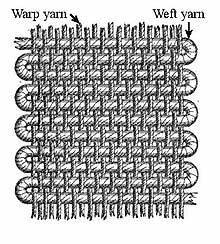My big problem with most wardrobe schemes is they don’t fit my lifestyle. I rarely wear jackets or skirts or dresses. I feel the cold and need clothes for a casual active life. What I do wear is pants with many top layers including big shirts, tunics, and vests. My clothes are most like the Sewing Workshop layering wardrobe (my post) – very top-heavy as I need things in the proportions : 2 bottoms, 4 tops, 8 layers.
In mid-winter, I most need very loose fitting tunics/ big shirts that will go over the top when I’m wearing half a dozen sweaters. It must be possible to wear thermal long johns without looking like a bag lady. . .
These big tops do need to be in flattering colours and my style and with good length proportions, but with little reference to my body shape, which is deep beneath. There may be a waisted pear down there somewhere, but in mid-winter I look more like an apple 😀
I’ve been thinking I ‘ought not’ to wear these ‘big’ styles because a slim fitted look is current. So wearing big garments would show my eye for style is stuck in the 80s to 90s.
But happily there are new oversized patterns. I did assume these proportions are intended for wear with leggings (the big top – narrow bottom proportion), but many of these patterns include straight legged pants. So perhaps I’m not the only person on the look out for this shape !
I’ve restricted this to patterns with more than 10 inches ease at bust level. There are many good tunic patterns (especially from independent pattern designers), but most of them are somewhat fitted at bust level then widen at hip level. Good for warmer weather, but not what I’m looking for here.
– – –
There are a couple of older big top patterns in the BMV catalogues.
Butterick 5481 is for a big shirt-tunic.

Vogue 8525 is a cut-on sleeve Vogue Woman pattern that has been around for a while.

But otherwise, interestingly, most of the current Big 4 patterns with these proportions were issued in the last few months. So this is a good time to be looking.
What is more modern about these styles is that most of them have cut-on, or occasionally raglan, sleeves rather than dropped shoulders.
Simplicity 2289 is a new pattern by Patty Read.

While for a Very Easy sloppy tunic there’s Vogue 8698.

I don’t think I would wear this myself. I’m a practical person and don’t like big sleeves or cuffs that drape into everything I’m doing. . .
Butterick 5524 is one I’m thinking of making. This would work for me better as those sleeves are not full length.

For knits there’s McCall’s 6205.

And McCall’s 6242 is a new ‘smock’ style for knits. I would definitely leave off the tight hip band !

There are many other new patterns which are generous in the upper body but tight on the hips. . . especially patterns with deep dolman/ batwing sleeves. So not for me ! In fact there are probably more new patterns for people who are larger above than below the waist. Sorry I haven’t picked them out 😀
– – –
There are also many suitable ‘ethnic’ styles.
Butterick 5494 is a new caftan pattern that looks fun.

I might make this ‘circular’ caftan as it makes me laugh, even though sadly it looks rather droopy made up. In fact it looks as if it’s as impractical to wear as floaty style kaftans. A new version of this type is McCall’s 6125.

I think I would constantly worry about knocking things over with all that extra fabric below my arms. Though I can see it as a fun beach or pool-side cover-up, made in a sheer fabric.
Most of the older patterns for generous sized tops are ‘ethnic’ in character.
Such as the classic caftan in McCall’s 4002.

Or a smock as in Stof & Stil 22013.

I love this type of smock style for warmer weather, but am not sure it would look good layered over thick sweaters.
Following on from that, there are many suitable styles among Folkwear patterns, particularly in the Caravan section.
And there’s Sewing Workshop’s Hudson top.

The related Shapes pattern line has several possibilities. Though I might have to fiddle with some of those to get them to look good on my sloping shoulders.
And there are half a dozen classic fleece top unisex patterns from McCall’s (see the end of the men’s section), as well as from Green Pepper and other companies that specialise in casual patterns.
– – –
So there’s no shortage of pattern possibilities for making this sort of cover-up style. As each of the Big 4 has issued a ‘big top’ pattern this summer, it even looks as if they might be coming back as a ‘current’ though minority taste for proportions.
Well, I haven’t actually seen anyone round here wearing one of these, let alone in Elle or In Style. Hmm. . . But this is a big gap in my wardrobe, whatever the fashionistas may say.
UK Elle this month is all about flared coats and military styling. While it’s the In Style party issue. If you really can’t manage a skin tight lace sheath or being covered in grecian draping – how about a Chanel styled vest over a sheer blouse worn with pants (limit the sheer to the sleeves if you like). A much easier and warmer option 😀
– – –
Patterns and links available October 2010
 Wikipedia
Wikipedia Wikipedia
Wikipedia


























